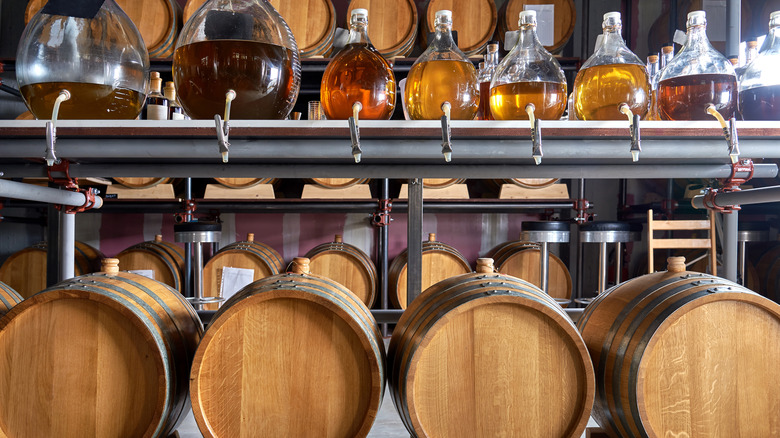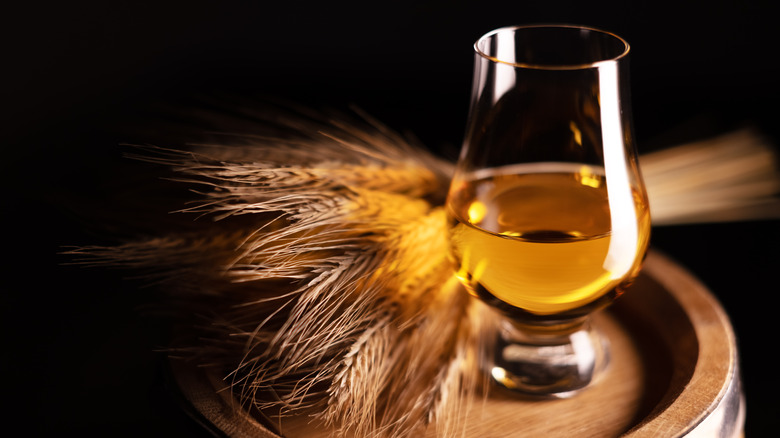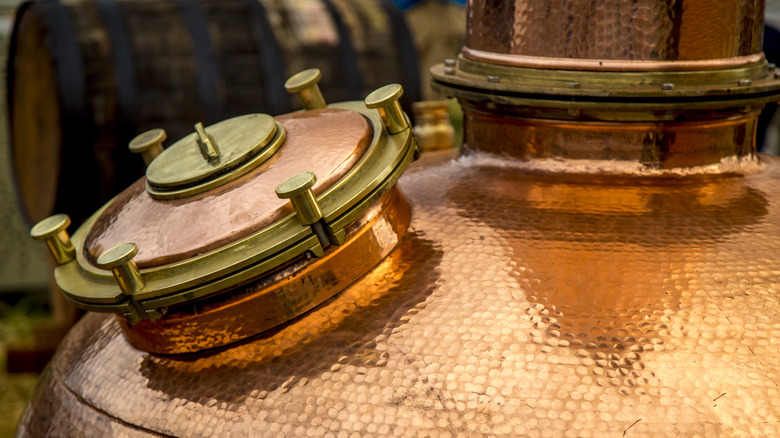Single Malt And Blended Whiskey Are Not Built The Same
Choosing a bottle or ordering a glass of whiskey is far from simple in today's world of craft spirits, innovative techniques, and exacting methods by skilled master distillers. It makes for intriguing discoveries and forged bonds over shared knowledge and whiskey revelry. But there's still a core of essentials when it comes to whiskey making, none more relevant than the distinction between single malt and blended whiskeys.
In addition to having subtle or overtly different characteristics, these two types of spirits are simply built differently. The term single malt whiskey, per its name, means that it's made in a single distillery using only malted barley. The taste tends to be more consistent due to uniform practices and specific barley suppliers, making it easier to identify and rely on.
Blended whiskeys, on the other hand, are a glorious mix of whiskeys made from potentially numerous distilleries and varying grains. The ingredients used for making each whiskey can be totally different, from malts to grains or even a mix of the two. A prestigiously delegated master blender becomes the artist who combines the separate whiskeys into a single delicately balanced product.
Those are the core differences between single malt and blended whiskeys, but nuances are notorious in the world of spirits. Depending on aging requirements, flavor profiles, production methods, quality of the grains, and regions where they're produced, it can be hard to distinguish those subtleties in your glass. But they definitely exist.
Blended whiskeys offer a riot of flavors and options
Blended whiskey is also referred to as vatted whiskey in reference to the process of vatting, or blending, the chosen whiskeys. Getting the perfect spirit marriage is both a calculated risk and a flight of fancy, one that often requires hours, days, or months to achieve.
The whiskeys being blended can come from any type of grain; the most prevalent ones include wheat, rye, unmalted barley, and corn. The chosen grain often depends on local availability, which helps with fresher ingredients and more controllable circumstances. The grain also strongly affects the layered textures and taste of the spirit — and whether it works in a bottle of blended whiskey.
For example, if you like a slightly sweet honeyed whiskey taste and creamy texture, seek a blend that includes a corn-based whiskey. For a dryer taste with a spicy flavor punch, you'll want to have some rye whiskey in the mix. Barley adds a toasted nutty profile — while wheat-forward whiskeys lean sweet, warm, and smooth on the palette. The key is finding a whiskey blend that maximizes the favorable characteristics of each grain.
Single malt whiskey and its upscale reputation
Single malts come with an air of superiority – one that's well-earned in many instances. Some distillers creating this type of whiskey have been in operation for generations, carefully cultivating their processes and guarding their secrets. Some grow their own barley or have lifelong ties with trusted regional farmers.
In addition to using only a malted grain with production at a single distillery, most single malt whiskeys have been aged at least three years. The taste will vary somewhat depending on the type of oak in the barrel, which can also affect the texture and aroma. When a whiskey has been malted, it will generally have a rich, complex flavor ranging from smokey and peated to nutty, fruity, floral, or vanilla tones, often distinguished by production location.
It's important to note that single malt whiskeys can be made anywhere in the world — while a single malt scotch can only be produced in Scotland. It has its own regulations, including that it's distilled in copper pot stills. All processes must take place in Scotland, including mash creation, distillation, and maturation. You'll notice that the spelling is different as well, with Scotland using the whisky spelling without the added "e" in U.S. and Irish whiskeys, regardless of whether it's a single malt or a blend. Flavor characteristics of single malt scotches vary wildly within the five major undisputed whisky regions of Scotland.



